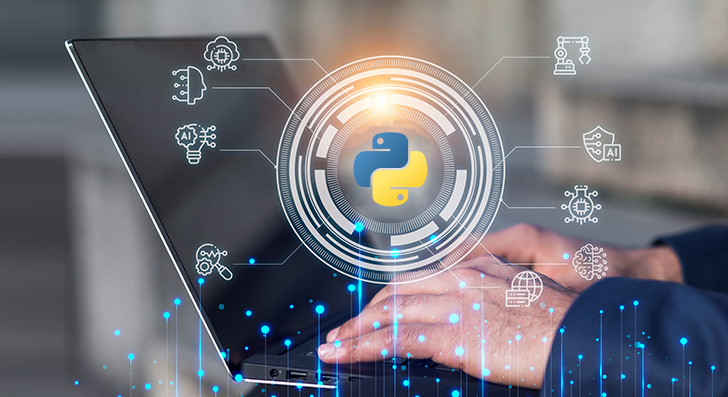In today’s dynamic landscape, the pervasive influence of artificial intelligence (AI) and its subsets, particularly machine learning (ML), is undeniable. The digital world is teeming with applications that leverage AI capabilities, whether through recommendation engines on e-commerce platforms, virtual assistants delivering round-the-clock support on websites, or search engines providing the most relevant results for any query.

According to a study by PwC, the potential economic contribution of AI is staggering, with an estimated USD 15.7 trillion slated to be added to the global economy by 2030. This is poised to boost the global GDP by a substantial 14%, underlining the transformative impact AI is set to have on various sectors.
At its core, artificial intelligence seeks to develop intelligent software and machines capable of emulating advanced human behaviors such as thinking, reasoning, predicting, and judgment. Within this expansive realm, machine learning emerges as a key player- a subset of AI where machines learn from provided data, akin to human learning, as opposed to traditional programming methods.
The language chosen for programming AI and ML solutions plays a pivotal role in realizing these ambitious goals. Among the myriad of languages available, Python emerges as a frontrunner, widely favored by the majority of AI-ML developers. Java follows closely behind, facing stiff competition from R, Prolog, and Lisp. While other languages like Scala, Julia, and C++ also find application in AI development, Python’s simplicity, versatility, and adaptability make it the language of choice.
The preference for Python in artificial intelligence programming is not arbitrary; rather, it is rooted in its numerous advantages. Why do experts prefer artificial intelligence with Python? Let’s delve into the key benefits of using Python for machine learning.
1. Large Range of Available Libraries
Python has probably the most extensively tested and well-structured environment for AI development with a rich tech stack of libraries and frameworks. It significantly reduces SDLC because developers don’t have to code from scratch for basic functionalities.
The growing popularity of AI-focused libraries has inspired Python software development companies to venture into data science and machine learning. Today, several Python libraries fit the AI-ML development bill as they can access, handle, and transform complex data in large volumes. Examples of such libraries include:
- NumPy: For performing mathematical and statistical operations
- SciPy: For scientific and technical computing
- Theano: For building deep learning models
- Pandas: For high-level data analysis
- PyBrain: For neural networks
2. Soft Learning Curve
Python is easy to learn due to its clear syntax and readability. Being a high-level, general-purpose programming language that is also simple and intuitive, it is easily picked up by data scientists who are not professional developers.
Usually, AI projects require substantial collaboration among developers, database architects, and data scientists. When the whole team has some level of proficiency with one common language, building a prototype becomes easier. Therefore, companies across the globe are increasingly using Python for AI and ML development.
As per the PYPL Popularity of Programming Language index by GitHub, Python was ranked as the number one programming language in Dec 2023.
3. Flexible Programming Style
Let’s get a little technical here. It isn’t easy to find a language as flexible as Python. Developers can choose either scripting or object-oriented programming (OOP) and combine Python with other languages seamlessly, which means you can write your code partly in Python and partly in some other language (e.g. C++).
Instead of being restricted to a particular function, Python can link different data structures together or back-end programming. Because most code would be verified in the IDE itself, it is easier to implement algorithms.
Leverage On-Demand Talent to Fast-Track AI Development
4. Platform Agnostic
Another advantage of Python programming for machine learning is its versatility and platform independence. It can operate across a wide range of platforms including Windows, Macintosh, Linux, Unix, Solaris, and more. As a result, AI-ML developers can implement attributes on one device and then transfer them to another device with minimal to no modifications.
Besides, developers using different platforms can collaborate effortlessly and make changes to the code. Therefore, it is no surprise that a large majority of programmers the world over have started using Python for machine learning.
5. Multiple Visualization Options
AI-ML projects require processing and visualization of vast volumes of complex data. To qualify as a candidate for AI and ML development, any language should come with great data visualization options.
Python libraries like Matplotlib, Plotly, Seaborn, ggplot, and Altair offer interactive data visualization tools that help data scientists build vivid, easily comprehensible charts and graphs. By enabling human users to easily read and interpret the outcome, Python allows AI and ML to expand across functions and industries.
6. Strong Community Support
Being an open-source programming language, Python has extensive documentation readily available on the internet. There are communities, discussion forums, and blogs where developers have entered valuable information into elaborative threads. Established support community and flexible programming style, soft learning curve, and range of available libraries ensure that even enterprise-level artificial intelligence applications enter the market faster when compared to those developed in other languages such as Scala or Julia.
With its 164,852 active repositories, Python is only third to JavaScript and Java at GitHub. This rich project documentation denotes the solid community attached to Python, involved in the development, testing, and troubleshooting. With readily available collaborators present across the globe, SDLC is accelerated.
7. Hassle-Free Testing and Debugging
With the widespread use of AI in day-to-day software, it is essential to consider the cost of developing an AI solution. A newly developed AI software needs to be tested against massive data with considerable noise. These tests have to be thorough to eliminate human bias because, with such a volume of data, an error if left undetected is bound to be amplified. Readily available talent and established community support make testing Python projects cost-effective and hassle-free. Additionally, tools such as IPython come with features for testing, debugging, and tab completion, further streamlining the process.
The Final Word
In essence, Python stands as the unrivaled choice in the realm of artificial intelligence and machine learning. Its simplicity, adaptability, and vast library ecosystem streamline development, reducing the development life cycle. With a soft learning curve fostering collaboration and platform independence enabling global cooperation, Python reigns supreme. Supported by an active community, Python has truly emerged as a transformative force driving innovation and efficiency in the evolving AI-ML landscape.





